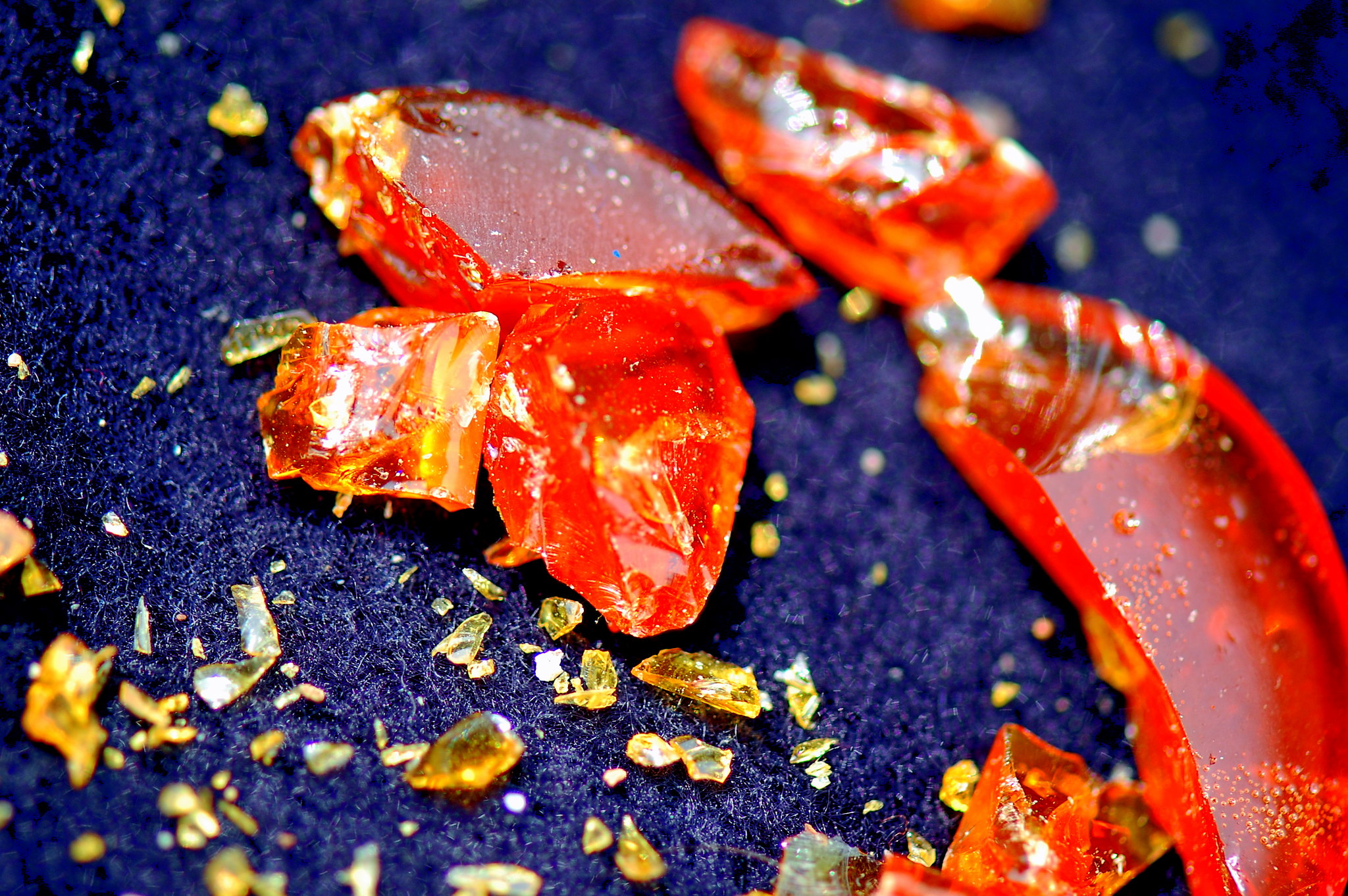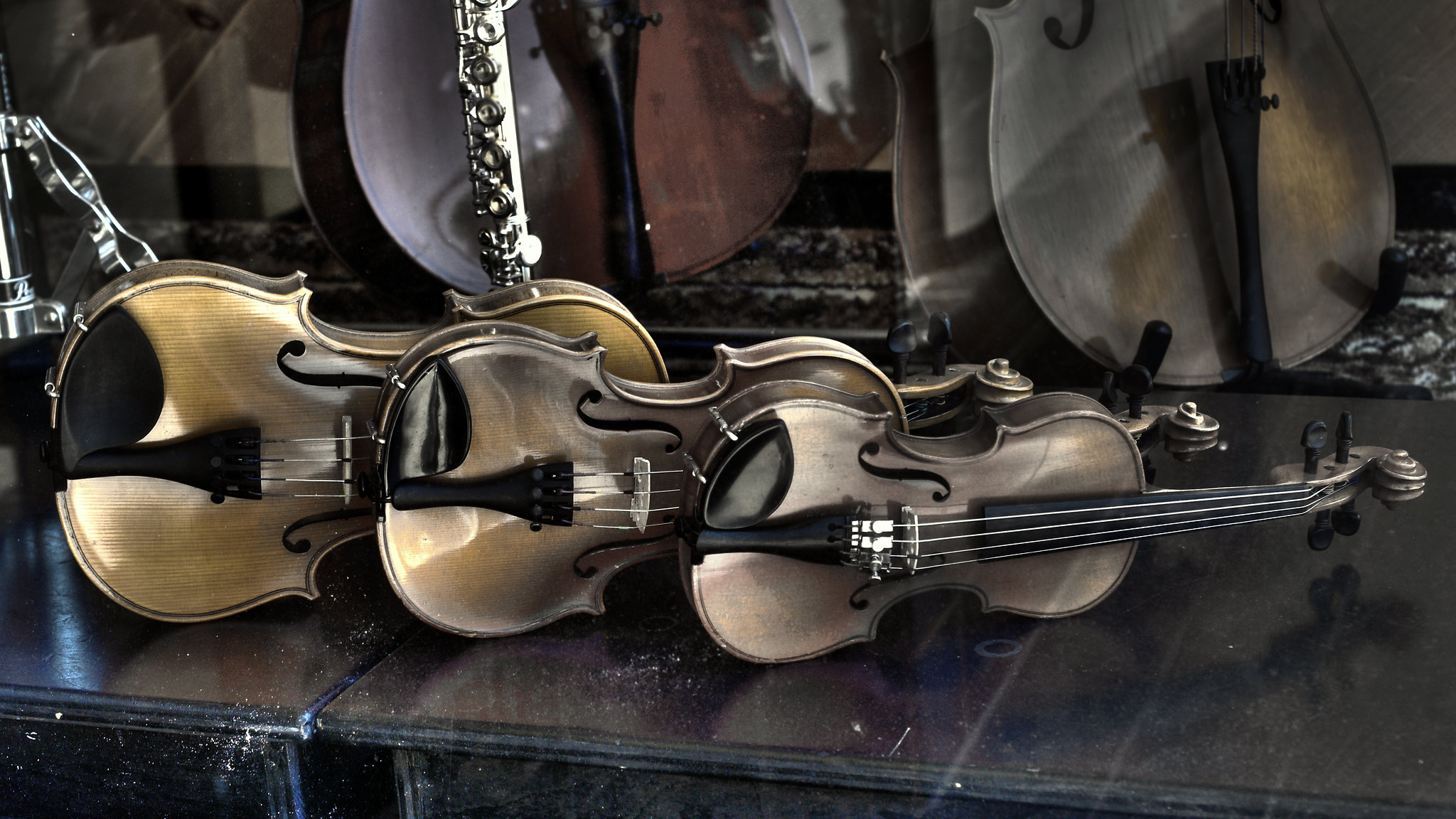Does the idea of a beginner violinist strike fear in your heart? Be strong and courageous: there is no reason for tinny and awful sounds from your violin for beginners. Beginner instruments should not sound like toys, feel like toys, or otherwise be treated like toys. A violin for beginners should look and feel exactly like a violin for professionals: smooth, warm, and able to produce beautiful music. So let's get fiddling!
Sizes of Violins
Violins come in various sizes, and they should be sized to a person's body. A beginner who is a child should have an instrument that is neither too big nor too small for their body. It would be terribly frustrating for a child to learn on an instrument that is completely wrong for their body.
Violins for adult beginners are the same size as violins for adults who are not beginners! If your body is anywhere in the average range of adult sizes, then a full-size violin will be the size you need. If you are a person whose arms or legs are much shorter than the average adult's, then make sure you seek out a professional to size you for the correct violin.
Violins range in size from 1/16 size all the way to full size. A 1/16 size violin is extremely small and used for children who are between 3-5 years old, typically.
Violins are sized by measuring a person's arm length and then choosing the correctly sized instrument for that person. If the player happens to be a child who is still growing, plan on buying or renting multiple sizes of violins to accommodate that growth.
If you do not have access to a violin shop, it's easy to figure out what size instrument you need! Grab a friend and a meter stick. Stand with your arms at your side and lift your left arm up, from your side, with your palm up and your fingers flat. Do not have your arms in front of you, like you're holding a big pile of something: your arm must be out to the side.
Have your friend measure your arm, starting at your neck and extending to the center of your palm. Then, make your decision on what size you need based on the number of inches you measure!
Sizing
1/16 size violins have a maximum of 15" for a measurement. 1/10 size violins have a range of 15-16" 1/8 size violins have a range of 17-18" 1/4 size violins have a range of 18-20" 1/2 size violins have a range of 20-22" 3/4 size violins have a range of 22-23" Full size violins have a measurement of 23" or greater.
Buying or Renting Your Instrument
Now you must decide if you are going to rent or buy your violin! There are a lot of music shops that allow the rental of instruments. This is especially nice if you are a parent who needs a small violin for a small person and are not interesting in buying that small person 5 violins before they stop growing altogether. As you rent, some places allow you to use some of that rent money to purchase a violin from their shop in the future.
Other people want to buy each violin for their student and then resell them as the child outgrows their instrument. It is entirely your choice whether you rent or buy instruments for your student.
Quality is Important
It's extremely important to note that playing a musical instrument is a craft. Think about if you were told to paint a beautiful mural but given the world's worst paintbrushes and crusty, old paint. Maybe the canvas is bumpy and rough as well, a surface that was never meant to be a mural! Everyone would be expecting you to paint something of note, but that would be nearly impossible without the proper tools or foundation. Think about how frustrating that would feel! What a recipe for disaster! That's how to get an artist to pick a different passion!
Now think about a beginner violinist, often a young person, who wants to sound like someone who has played for decades. Think about how that beginner might feel if you handed them a very cheap, very bad-sounding instrument. Think about how disheartening it would be to try to learn on an instrument that doesn't keep its tune, doesn't sound rich and velvety, an instrument that is a glorified shoebox. What a bad way to introduce an individual to the beauty of the violin! It's hard enough to keep beginning students in a positive trajectory in learning music, but it's nearly impossible when you hand them awful tools and expect greatness.
Make sure that the instrument you're choosing is of high quality. Very small violins are naturally more strained-sounding and much less rich and full than a full-sized instrument, so it's very important not to give a beginner a cheap and trashy instrument. Instead, make sure your violin is purchased from a reputable source, someone who specializes in lutherie and pedagogy. As violins become larger, their sound quality gets naturally nicer, larger, and overall easier to manipulate. These good-quality beginner instruments will give you a solid foundation and the success every beginner needs and craves.
If you're worried about a small child using a very delicate instrument, beginner violins now come in more materials than just wood! An interesting new technology has allowed the creation of a carbon composite violin body that is touted as "indestructible"! When little hands are learning how to hold and care for a violin, this may be an excellent option for those who are willing to look beyond tradition.
Another key element to a good start to playing the violin is a good quality bow. Some bows are made very cheaply and are not good for a beginner nor any musician. Set your budding violinist up for success by giving your beginner a high-quality bow along with their beginner instrument. A cheap bow will fall apart, will not produce fine music due to its cheap synthetic horsehair, and will be heavy and bulky. By the way, you do not have to take out a second mortgage for either a student violin or a student violin bow. Both are very reasonably priced and can be even purchased as a package deal along with a good quality case and appropriate rosin.
Sometimes violins are passed down from generation to generation. Be aware that some of these very special instruments do not have the fine tone or quality you would seek in an instrument. Great Grandpa's fiddle is extremely special and ought to be treasured, but the reality could be that it is not a good violin! That's OK: it still has a lot of value for you, but look elsewhere for your own instrument. Old violins can sometimes be wildly valuable (a million-dollar Stradavarius, anyone?) and sometimes be used as tinder! Be open to the fact that you might need to look beyond your own attic for a beginner violin.
Violin for Beginner "Outfits"
There are plenty of luthiers who not only make incredibly fine full-sized professional instruments, but they make tiny beginner instruments as well. These instruments come fully outfitted with a case, shoulder rest, bow, rosin, strings, bridge, and of course, the violin itself.
Scott Cao Violin
Scott Cao violins have a reputation for being extremely high quality, produce beautiful sound, and won competitions for their exceptional craftsmanship.
Fiddlerman Artist Violin Outfit
This gorgeous instrument comes with all the necessary equipment for a successful start! Included is a perfectly carved Despiau bridge, D'Addario strings, and aged 7 years!
Fiddlerman Concert Deluxe Violin Outfit
A beginner violin that won't disappoint! Hand-carved body, made by artisan luthiers in the United States! Wood is aged 6 years, lovingly put together for the best sound quality possible. Features a professional-grade bridge and lifetime adjustments for no extra cost.
Summary
It's so important to set up new violinists with an instrument that won't let them down. It's hard enough to try something new: don't ask for disappointment and failure with a bad instrument. Make sure you buy your instrument from a reputable source and one that will accept returns if your instrument is not what you had hoped. Make sure you're allowed to play it, enjoy it, and take it for a test drive! But most importantly, make sure that your new violin is one that will allow you to make the most beautiful music and carry you onto the next phase of your playing: professionally!







